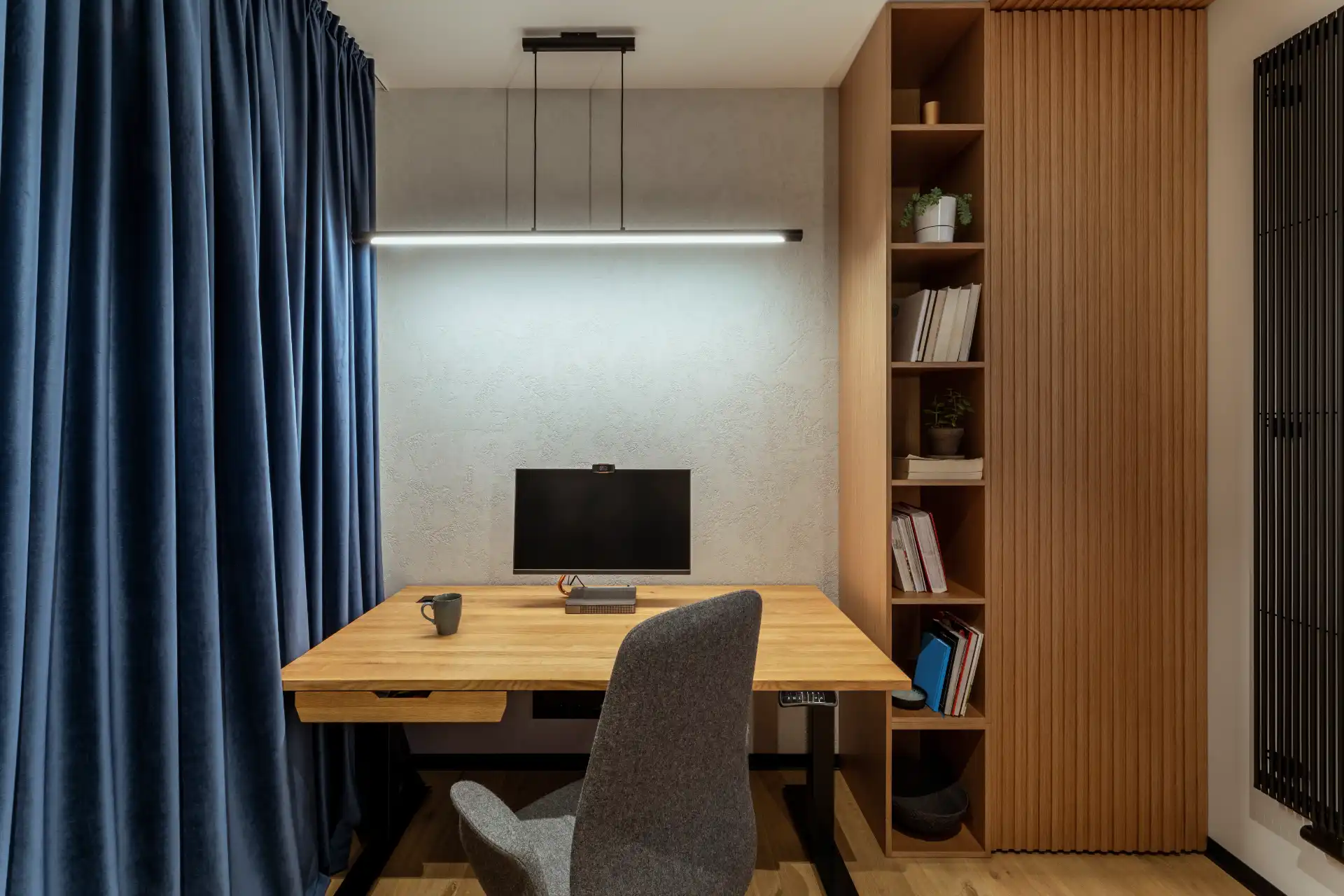Working in a compact office doesn’t mean you have to sacrifice comfort or productivity. With the right layout, smart furniture, and strategic organization, a small workspace can be just as efficient—and even more inspiring—than a larger one. In this guide, we’ll walk you through practical small office design tips to help you get the most out of every square inch.
1. Choose Multi-Functional Furniture
Opt for pieces that serve more than one purpose. A desk with built-in shelves, a storage ottoman, or a foldable chair can save room and add utility without cluttering your space.
Example: A filing cabinet that doubles as a printer stand or extra seating with hidden storage.
2. Go Vertical
When floor space is limited, take advantage of your walls. Install shelves, hanging organizers, or pegboards to keep supplies accessible while freeing up your desk area.
Wall-mounted storage not only saves space but also helps reduce visual clutter, making your office feel larger and more open.
3. Use a Compact or Corner Desk
Choose desks designed specifically for small spaces. Corner desks make great use of otherwise unused space, while wall-mounted or foldable desks are perfect for ultra-compact offices.
4. Embrace Light Colors and Natural Light
Light-colored furniture and wall paint can make a small room feel brighter and more spacious. Whenever possible, place your desk near a window to benefit from natural lighting—it boosts both mood and productivity.
5. Add Mirrors for Depth
Mirrors reflect light and give the illusion of a larger space. Consider placing a mirror opposite a window or behind your desk to visually expand the room.
6. Keep Cables Out of Sight
Messy cords can quickly make a small office feel cramped. Use cable management tools like clips, sleeves, or cable boxes to keep cords organized and out of view.
7. Declutter Ruthlessly
Regularly assess what you truly need at your workspace. Remove unnecessary items and digitize where possible—such as using cloud storage instead of bulky file cabinets.
For more low-cost setup advice, read our Budget Home Office Setup post.
8. Incorporate Floating Shelves
Floating shelves are a sleek, space-saving solution that provides storage for books, décor, and supplies without taking up valuable desk or floor space.
9. Create Zones
Divide your space into zones: one for computer work, one for paperwork, and maybe a small area for breaks or creative thinking. Even in tight spaces, zoning helps with mental clarity and task focus.
10. Use Transparent or Minimalist Furniture
Clear acrylic chairs or glass desks visually “disappear” into the room, helping the space feel less crowded. Minimalist styles also reduce distractions and promote a clean workflow.
Final Thoughts
Designing a small office space is all about working smarter—not bigger. With the right furniture, lighting, and organization, you can build a functional, stylish, and highly efficient work environment. Whether you’re setting up a home office or refreshing a corporate cubicle, these small office design tips will help you make the most of your space.
Want to enhance comfort while saving space? Explore our guide on Ergonomic Office Furniture Ideas to complement your small office setup.


